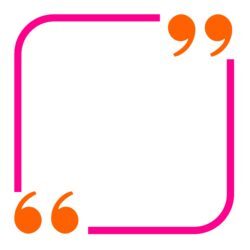10 Reasons to Use Quotation Marks
Welcome to the third post in the series about italics and quotation marks. T0day we will talk about ten ways to use quotation marks, and a few quotation mark DON’Ts. 
I am writing this post on March 4, which is
NATIONAL GRAMMAR DAY!!!!1. Use quotation marks to enclose direct quotes, or the exact words someone says: Mayor Jones said,”The ribbon-cutting for the new park will take place net Saturday at 9 a.m.” Direct quotes can of course be longer than once sentence, so the quotation marks go at only the beginning and end of the quote. For multi-paragraph quotes, use quotation marks at the beginning of each quoted paragraph, but only at the end of the final paragraph.
2. Use quotation marks in dialog.
“I am not eating the vegetables,” said Nan.
“Well,” said Mom, you won’t be getting dessert.”
A few authors have stopped using quotation marks for dialog. Most of them use hyphens to indicate dialog instead. A few of them use nothing at all.
3. Use quotation marks around words or phrases that come directly from another person or source: The advertisement said that if I use this cream, I will have “ageless skin forever.”
4, Use quotation marks to indicate sarcasm or irony: My brother claims that he is tall for his age. Ha! He is so “tall” that he can fit into kids’ pants!
5. Use quotation marks around slang or intentional grammar or spelling mistakes: She said she had gotten my book from the “liberry.” She told me she just didn’t have enough “bandwidth” to discuss the project at this time.
6. As we said in a previous post in this series, quotation marks are used for titles when they are parts of longer things, for example, titles of short stories, poems, songs, newspaper and magazine articles, episodes of television series, etc. Complete works, such as books, magazines, newspapers, and TV series names, are in italics: I just read “The Road Not Taken” in The Complete Poems of Robert Frost.
7. Use quotation marks around a word or phrase that has an unusual or “abnormal” use or placement in a sentence: We didn’t like her “I-am-better-than-you” attitude.
8. Use quotation marks if you define a word in a sentence: Did any of the students know that caffoy means “a type of silk from the 16th century”?
9. Use quotation marks around jargon if the audience you are writing to might be unfamiliar with it: The instructor told the students in the beginning computer class about the “cloud.”
10. Use quotation marks around words that follow labeled or marked: I almost dropped the box marked “fragile.”
DO NOT use quotation marks in these situations:
1.Indirect quotations: She said that it might rain tomorrow for our picnic.
2. Around yes or no unless they are part of a direct quote: Please answer yes if you know the answer to my question. She said, “Yes, I was out last night.”
3. You do not need quotation marks around well-known sayings: It was raining cats and dogs this morning, so we couldn’t go for our walk.
4. Be careful with single quotation marks. There is only one use for them — for something that needs to be quoted that is already in quotes: She said, “I love that old song ‘Yesterday’ by the Beatles.” Do not use single quotes for any of the above reasons to use quotation marks. Use double quotes.



